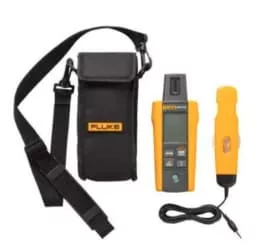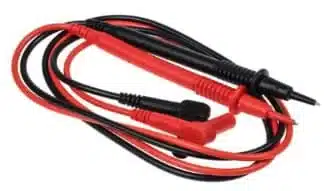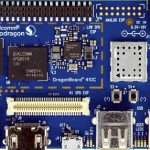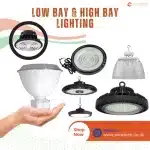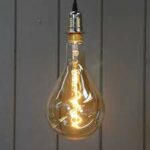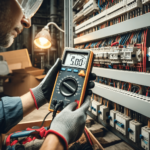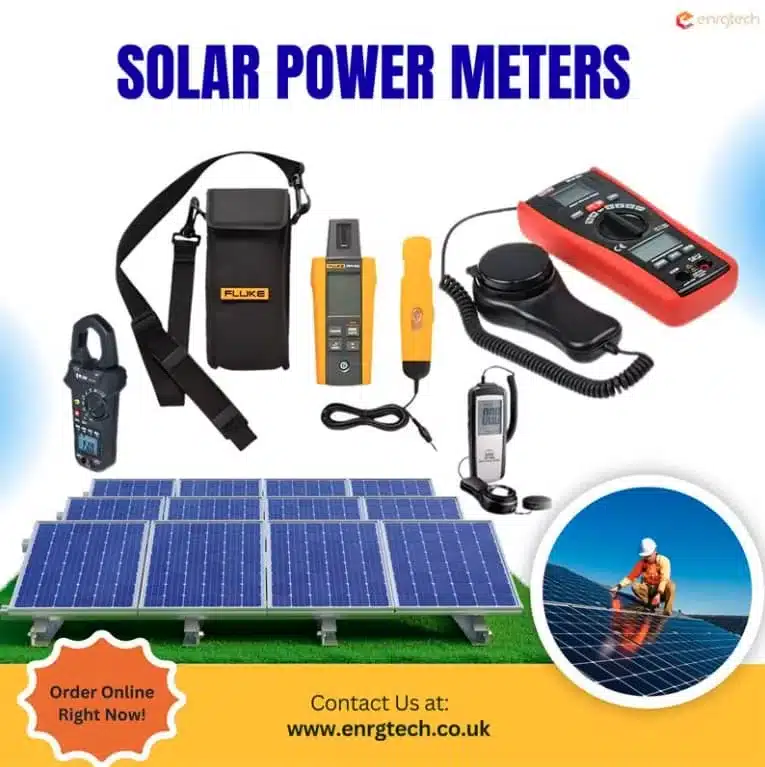
Introduction
Solar power has become increasingly popular as a sustainable energy source across residential, commercial, and industrial settings. The more people and businesses adopt it, the greater the need to accurately measure and monitor solar systems. This is where a solar power meter comes into play. This guide provides a detailed look into what solar power meters are, their importance, types available, and how to pick the right one for your needs.
What is a Solar Power Meter? Definition and Core Purpose
Solar power meters, also called solar energy meters or solar radiation meters, are specialised instruments that translate the abstract concept of sunlight into a concrete, usable point. These devices measure the sunlight’s intensity (irradiance) hitting a particular surface. They provide real-time data on solar intensity, expressed in watts per square meter (W/m2). The core purpose of a solar power meter is to provide an accurate, quantifiable measurement of the energy output from the sun at a particular location and time. They are must-have tools for anyone involved in solar energy, offering valuable insights for both residential and commercial solar projects.
The Significance of Solar Power Meters in Solar Systems
Solar power meters matter in solar energy systems because sunlight is not static. Cloud cover, air mass, time of day, and even smog shift irradiance minute-by-minute. Without accurate readings, modelling software can oversize (wasting money) or undersize (causing power deficits) your array. Investing in a quality solar power meter is a smart move for anyone serious about harnessing the full potential of solar technology. By accurately measuring the amount of solar irradiance and power output, these meters help installers, engineers, and homeowners:
- Determine solar panel efficiency
- Site surveys for solar installations
- Test solar panel orientation and tilt
- Performance troubleshooting of PV systems.
Most Standard Types of Solar Power Meters Explained: Exploring Their Variations
Solar energy meters come in various forms, and understanding these types is a key to selecting the right tool for your needs. Some popular versions include:
- Handheld Solar Power Meters
These are portable, battery-powered devices designed to measure solar irradiance instantly, anywhere you go. They are lightweight and easy to use, allowing quick diagnostics and on-site performance checks. A handheld solar power meter is ideal for installers, technicians, and hobbyists to assess the solar system’s performance, troubleshoot issues like shading, and verify optimal panel orientation.
- Digital Solar Irradiance Meters
Also called pyranometers, digital solar energy meters offer precise, easy-to-read measurements of solar power per square meter. These meters display results on a digital screen, often with data logging features for trend analysis. A digital solarimeter eliminates guesswork and ensures high accuracy for every application, ranging from laboratory testing to PV system setup.
- Panel-Mounted Solar Energy Meters
These meters are designed for permanent installation within solar panel systems for continuous monitoring. They integrate with data loggers for automated tracking of energy production, consumption, or system efficiency. Panel-mounted models are perfect for residential, commercial, and industrial solar setups requiring consistent and reliable data.
- Smart Solar Power Meters
These meters bring advanced and next-generation monitoring to your solar energy setup. They offer features like wireless connectivity, remote access, real-time analytics, and integration with smart home systems. Smart solar energy meters empower users to optimise energy usage and identify issues before they impact performance.
Using a Solar Power Meter the Right Way: A Brief Look
Using a solar power meter is simple, but accurate results depend on proper handling. To get the most reliable results, consider the following techniques:
- Positioning the Sensor: Always place the meter on the same plane and angle as the solar panel. Ensure the meter is free from any shading or reflective interference.
- Periodic Measurements: It is also crucial to take measurements at various times of the day and under different weather conditions to build a comprehensive picture of a location’s solar potential.
- Record the Reading: Note the real-time irradiance displayed on the screen.
- Log Data (if available): Use built-in memory or connect to software for analysis.
Implementing these techniques helps assess panel orientation, tilt angles, and shading issues, leading to better overall system performance.
Calibrating a Solar Power Meter: Maintaining Its Accuracy
Over time, like other instruments, even the most advanced meters can experience slight drifts in sensitivity or reading due to environmental factors, aging sensors, or regular use. Regular calibration—ideally against a reference standard—helps correct these deviations, ensuring the device consistently delivers precise data. Calibrating a power meter ensures that the device provides precise data and protects the investment by optimising energy output. In essence, by making calibration a routine part of maintenance, users can trust their solar power meter to deliver dependable results and uphold system efficiency.
Selection Guide: How to Choose the Right Solar Power Meter
An underperforming meter can lead to misdiagnosis, wasted time, or even lost energy revenue in professional settings. Solar irradiance meters come in various versions, and choosing the right one involves key factors that align with your budget and preferences. When choosing one, consider the following parameters:
- Meter Type and Intended Use (Indoor/Outdoor)
- Measurement Range and Accuracy
- Display and Readability
- Portability and Durability
- Ease of Use and Compatibility
- Power Source and Battery Life
- Data Logging and Connectivity
- Compliance and Certification
- Cost and Brand
- User Reviews.
Key Takeaways
A solar power meter is an indispensable tool in the era of renewable energy, offering a practical, affordable solution for both professionals and homeowners. These environmental test and measurement tools are a smart investment for anyone serious about harnessing solar energy efficiently. If you’re looking to go green or upgrade your existing solar setup, a quality solar energy meter should be high on your checklist.






